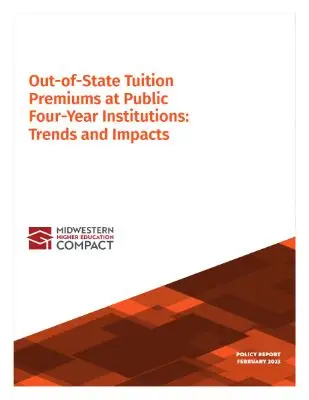Out-of-State Tuition Premiums at Public Four-Year Institutions: Trends and Impacts
In an era in which public postsecondary institutions increasingly face budget constraints, the state residency of students has become an important factor in complex decisions on tuition-setting policies and enrollment management.
This report examines the current trends and impact of out-of-state tuition premiums – defined as the additional amount of tuition and fees for nonresident students – at public four-year institutions in the U.S. Regional approaches to reducing out-of-state tuition premiums are described, and past research on the effects of tuition premiums is summarized.
Key findings of the report focus on:
- Prevalence of residency-based tuition rates
- Typical size of out-of-state premiums
- Interstate student exchanges
- Impacts of residency-based tuition rates
Policy options discussed in the report include:
- Maintaining and optimizing residency-based pricing.
- Decreasing the size of out-of-state tuition premiums.
- Providing targeted scholarships for out-of-state students.
- Participating in interstate tuition exchanges.

